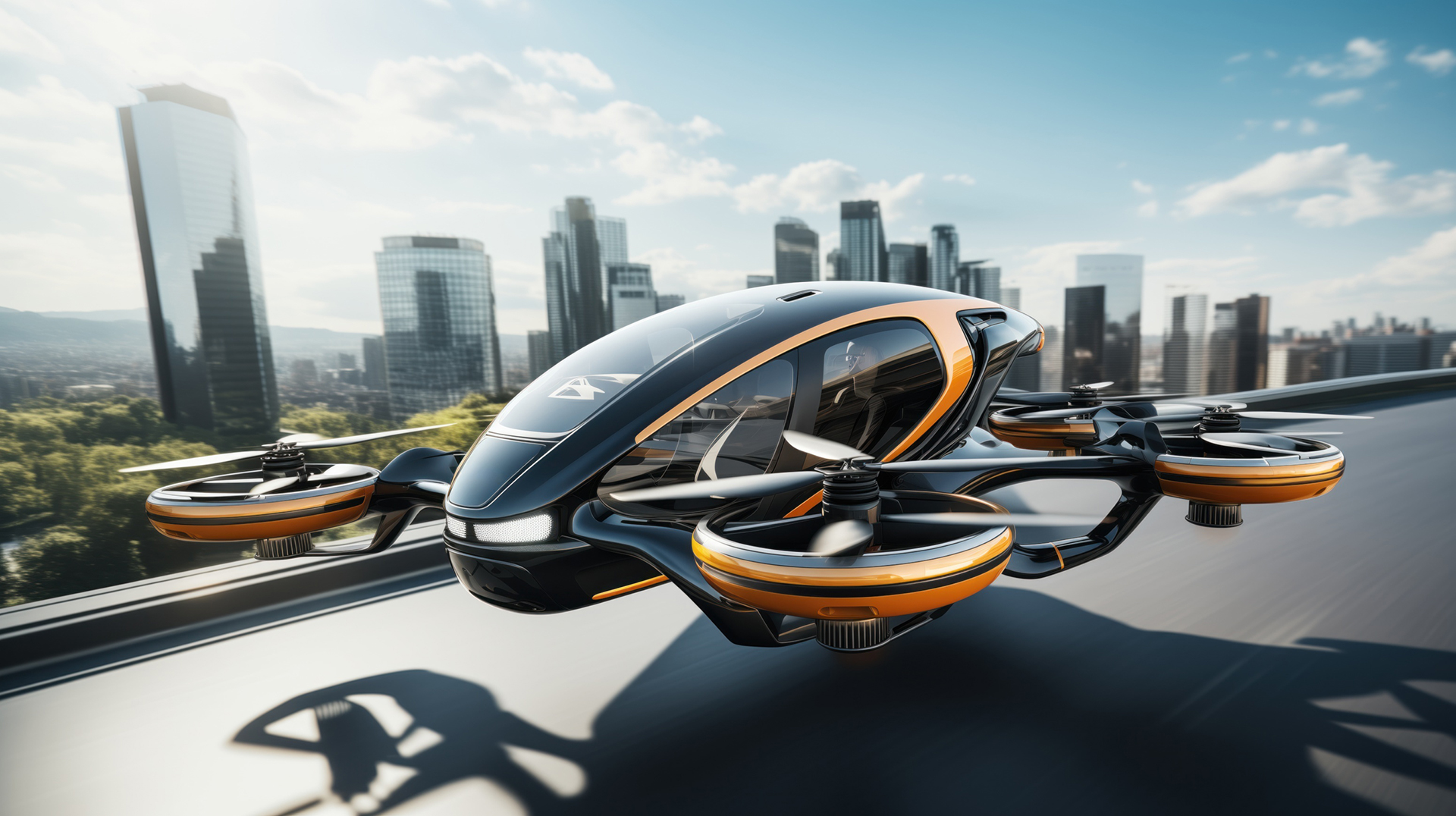
Urban air mobility (UAM) is a mode of transportation that avoids traffic congestion by flying people and cargo above it at low altitudes. It may sound like science fiction or something from the cartoon “The Jetsons,” which depicted people going from place to place in flying cars. However, that concept is set to become a reality as electric flying taxis could begin operating in the U.S. as soon as 2025.
The eVTOLs (electric vertical take-off and landing aircraft) ascend and land vertically just like a helicopter and because they’re electric, are much quieter. “It ties into this concept of smart cities where getting around – going from one place to the other – is going to be much easier and sustainable, while allowing for dense urban areas,” says Raghu Raghavan, Dean’s Professor of Management Science and Operations Management at the University of Maryland Robert H. Smith School of Business.
The aircraft will take off and land – picking up and dropping off passengers as they go – from sites called vertiports. The vertiports can be located on the roofs of existing buildings. The flying taxis seat four to six people and on a typical day, a group of passengers might take a flying taxi to the airport after being picked up from a vertiport close to their homes.
Raghavan and Bruce Golden, the France-Merrick Chair in Management Science at Smith, worked with then-PhD candidate Eric Oden to perform analyses that looked at the logistics associated with running a system of these taxis in the early going. The research focuses on the problem of routing and scheduling them in a way that maximizes the number of passengers transported.
They found three key challenges for electric flying taxi firms in the early phases: demand, time windows for customers, and the taxis’ battery management constraints. Washington, D.C., taxi data was used to demonstrate their findings in a real-world environment. Golden says, “When you do research like this, you’re looking into the future, and you want to make sure your assumptions are as solid as they can be.”
The authors developed an algorithm that electric flying taxi companies can use to schedule passengers in the same way that ground transportation taxi firms do. “The algorithm allows them to schedule their service to maximize the number of people they transport,” says Raghavan. “That then translates into maximizing revenue generated from those passengers.”
The researchers found that passengers wouldn’t want to deal with long waits for these taxis to arrive, just as they don’t like waiting for ground transporting taxis or subways. Golden likening it to riding the Metro in the nation’s capital. “If you had to wait more than 10 minutes from the Red Line to the Blue Line you’d say, ‘This is crazy!’”
There’s also the battery issue. It takes time to recharge the battery that runs the electric flying taxis and fare scheduling must be cognizant of that. “You fly from place A to B just like you drive your Tesla,” says Raghavan, “it’s discharging, so you can’t just keep flying it.” Once the taxi lands at its first destination, the second is determined by how much power the battery has left or a decision must be made to charge the taxi so it can make it to the next stop. “You’ve got to bake that in” to the fare scheduling mix says Golden.
The research developed formulations for successfully routing electric flying taxis over a time-expanded network. One of the reasons Golden, Raghavan, and Oden were inspired to pursue this work was the promise that UAM shows for improving our daily lives. It can reduce the time and cost of moving people and goods in and around cities. They point out several directions for further research including synchronizing air and ground transportation. For instance, flying someone from the airport to a vertiport, then having a car pick them up from there and driving them home.
Read the study, “The Urban Air Mobility Problem”, in the Annals of Operations Research.
Media Contact
Greg Muraski
Media Relations Manager
301-405-5283
301-892-0973 Mobile
gmuraski@umd.edu
Get Smith Brain Trust Delivered To Your Inbox Every Week
Business moves fast in the 21st century. Stay one step ahead with bite-sized business insights from the Smith School's world-class faculty.